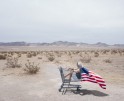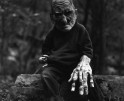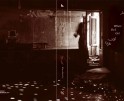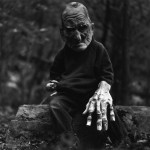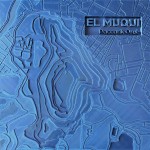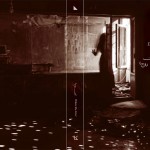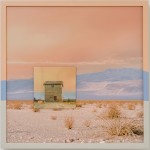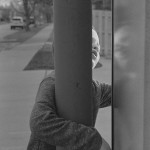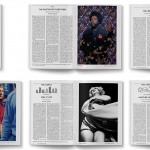Review Santa Fe: Stephan Jahanshahi: Nation of Desire
Today, we are continuing to look at the work of artists from the Review Santa Fe portfolio review event. Up next, we have Nation of Desire by Stephan Jahanshahi. I originally met Stephan during the 2023 reviews, but have since kept an eye on the development of this project.
Stephan Reza Jahanshahi-Ghajar is an Iranian American photographer based in Los Angeles. A graduate of the MFA Photo, Video and Related Media program at SVA, he uses photography to examine how community, environment and narrative shape experience and identity. Stephan’s practice has explored the poetics of climate change above the Arctic circle, the bonding experience of sport as a means of transcending divisions of race, class and orientation in North America, and the experiences of the Iranian diaspora.
Follow Stephan on Instagram: @stephanjahanshahi
Nation of Desire
Nation of Desire is a photographic collection of portraiture, still life and poetry celebrating the Iranian diaspora community in the US. The title is taken from a conversation with one of the portrait sitters in the project who described his lived experience as a queer Iranian. He described being perpetually masked, forced to hide his queerness when in Iran and downplay his Iranian heritage in the US in response to xenophobia, thus he belonged to the liminal space of desire stretched between two cultures. This project is a love letter to the Iranians balancing their histories and identities with the narrative and experience of the American dream.
Daniel George: What brought about Nation of Desire and your interest in exploring photographically the Iranian diaspora in the United States?
Stephan Jahanshahi: In many ways Nation of Desire is an autobiographical project through the lens of community. My father was born in Tehran in 1960 and came to the United States for his University studies. When the revolution in Iran started in 1979 he made the difficult decision to stay, separated from his family to try and make a life for himself in the United States. The trauma of that decision coupled with the fear of violence being experienced by Iranians in the US during the Iran hostage crisis led my father to choose to build a life for himself independent of a diasporic community, so growing up my cultural connections were made through food, history, household craft objects, and art but not other Iranians. I always felt this vacancy of community although naming it took years.
The privilege of photography, at least in the manner I approach the medium, is that it requires engagement with the external world. This provided the perfect entry point for my reintroduction into the Iranian diaspora; I could ask Iranian Americans to sit for a portrait and during the session we could start to talk about our shared or differing experiences.
DG: One aspect of this work that I appreciate is your combination of portraiture, still life, and poetry as a means of amplifying aspects of culture—creating a richness to the project. Why did you feel it was important to approach subject matter more broadly?
SJ: From the outset of this project I knew I would be pushing against a tendency towards monolithic language when engaging with both the Iranian American community as well as my experience of Iranian heritage. I think it’s a natural reaction when presented with new information to try to distill it down into manageable amounts, but the unfortunate casualty of this process is nuance. Diversifying my approach to include imagery beyond portraiture is a strategy designed to protect the breadth of experience the project engages with.
As anyone who has visited the British Museum or the Pergamon or the Met in New York can confirm, there is a different level of compassion and reverence afforded SWANA (Southwest Asian/North African) cultural artifacts than is often offered to SWANA people. Since this project was conceived as a love letter it seemed the best visual language to use to compose that love letter were the elements of culture I grew up around; poetry, craft artifacts, textiles, tea cups, all these small reminders gestured towards the shared interiority we brought with us as Iranians.
The project also contains several images I refer to as “cultural landscapes”, images made by placing Iranian cultural artifacts in American landscapes. These images were made as a direct refutation against the travel ban imposed by the first Trump administration that prohibited Iranians as well as citizens of other Muslim majority nations from entering the United States, a policy that separated my Aunt and Uncle from each other for more than 5 years. The three defining qualifications of a diaspora are people, place, and movement, to make Nation of Desire I would need to have visual strategies for expressing all three of these elements
DG: A good portion of your artist statement tells of the origin of your project title. What significance does the “space of desire” have for you? How would you say your photographs shed light on this sort of experience?
SJ: There is a quote by Egyptian writer and Nobel laureate Naguib Mahfouz I love paraphrasing, that “art is a criticism of society and life…if life became perfect, art would be meaningless and cease to exist”. Existing between two spaces allows you to be a bridge, but as a bridge you are forever in-between. This liminal experience can only be one of desire and not fulfillment, but it is also the instar from which a new synthesis of identity may be born. My hope is that my photography confronts the assimilation narrative that to succeed in America we have to let go of being Iranian, and each of us have the personal autonomy to decide how we want to express both identities in wonderfully complicated, sometimes contradictory ways.
DG: At this moment, this project is identified as Ongoing. I am always curious about personal creative works like this, because they are so connected to the artist, can they ever be complete? What do you anticipate the future of the project looking like?
SJ: It’s an excellent question! I think this project is the articulation of a lived communal experience, and in a way is also a living thing unto itself as a result of that. By that logic, so long as the diaspora exists then the questions of how it fits into the larger community will also continue to exist and be redefined and challenged and renewed as the diaspora is redefined and challenged and renewed. Logistically I know that there are demographics within the Iranian diaspora who are not yet represented and the project cannot be considered complete without them. Being Iranian is often equated with being Persian, however that is merely one ethnicity that exists within a contemporary Iran including Afghan, Turkoman, Azerbaijani, and Kurdish communities just to name a few. As the population of Iran is diverse, so too is its diaspora and I do not consider this project to be a complete portrait without them.
A few years ago I began to perform stand up comedy for fun and to afford myself the opportunity to make a creative expression with an audience present, photography is an often lonely process with a promise of longevity while comedy is a fleeting but collective artform. My thesis statement as a comic (apologies to any comedians reading this, I was trained in my MFA that all art has to have thesis statements) is that we have more in common with the people and ideas that scare us than we are comfortable admitting. As I write this in Los Angeles on November 7th, 2024, there is alot in the world to be afraid of. I consider it my life’s work to express the self-evident truth that we are not enemies but friends, that celebrating ourselves and each other releases the better angels of our nature.
DG: As you have been making this work, have you gained any new insights or comprehension from those Iranians “balancing their histories and identities with the narrative and experience of the American dream?” Has this had any sort of effect on you and the continued formation of this work?
It has been an immense joy to better know my fellow Iranian Americans through the making of this project. When I started reaching out to people to sit for this project I was terrified I would be rejected as “not Iranian enough” as a mixed person, but I soon discovered that everyone I spoke to and photographed had to contend with a similar anxiety, whether they were first generation immigrants or had been American for generations. In my experience anxiety is excitement without direction, so I am excited by the opportunity to continue to engage with what it means to be Iranian American. Making this project has affirmed to me that identity is not a static definition but a fluid, ongoing expression of self.
Posts on Lenscratch may not be reproduced without the permission of the Lenscratch staff and the photographer.
Recommended
-
Martin Stranka: All My StrangersDecember 14th, 2025
-
The Family Album of Ralph Eugene Meatyard at the High MuseumDecember 10th, 2025
-
Paccarik Orue: El MuquiDecember 9th, 2025
-
Richard Renaldi: Billions ServedDecember 6th, 2025
-
The Art of Documentary Photography: Rania MatarOctober 25th, 2025





















